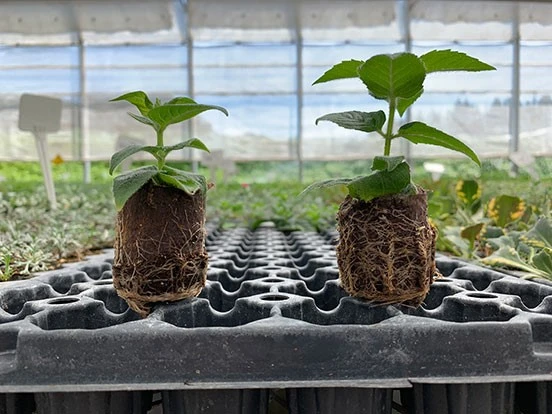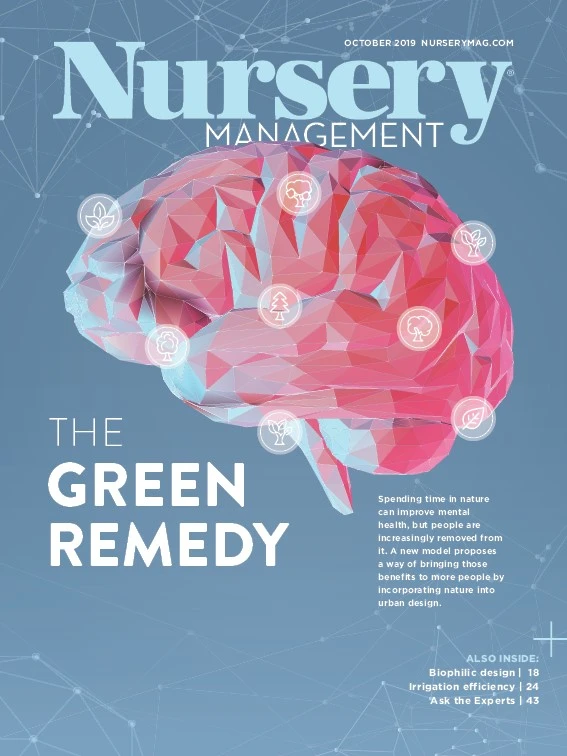
Mycorrhizal fungi directly contribute to faster plant growth and development with increased nutrient and water availability.
_fmt.png)
1 | What is the role of mycorrhizae in plant nutrition?
Outside the root, mycorrhizal fungi develop into the soil by extending their mycelium (hyphal network) and prospecting for nutrients far from the plant. The nutrients are relocated and delivered to the root. They are exchanged with the host plant through dedicated exchange structures. In this trade, the plant obtains mainly water, macronutrients and micronutrients from the mycorrhizal fungi. In return the fungal symbiont receives organic carbon compounds (photosynthates), in the form of lipids and sugars produced by its photosynthetic host. These photosynthates are then transferred and used in the growing margins of the mycelium and developing reproductive structures such as carpophores and spores.
The main outcome of this complex and finely tuned symbiotic interaction, and ultimately the role that mycorrhizae play, is to greatly improve the ability of the plants to gather and utilize water and nutrients, from the surrounding soil or substrate.
2 | Why should growers consider using mycorrhizal fungi to improve plant nutrition?
LC: This mycorrhizal symbiosis directly contributes to plant nutrient availability and utilization throughout the plant’s entire life cycle. Mycorrhizal fungi are capable of accessing nutrient pools in the soil/substrate that are inaccessible to plant’s roots by solubilizing these tightly-bound nutrients and delivering them to the plant. Due to this increased nutrient efficiency, mycorrhized plants need significantly lower amounts of readily-available fertilizers compared to non-mycorrhized ones, which reduces the economic impact of plant nutrition on the overall costs of plant production.
3 | How does mycorrhizal inoculation affect different types of plants?
LC: Mycorrhizal fungi adapted and evolved to interact with different plant species over more than 400 million years. In doing so they differentiated in specific and particular types of mycorrhizae, among which the most important are the Endomycorrhizae or Arbuscular mycorrhizal fungi (AMF), which interact with many flowering ornamentals, vegetables and farm crops, and the Ectomycorrhizae, which interact mainly with hardwoods and conifers. The most efficient mycorrhizal inocula (such as the MycoApply® professional brand produced by Mycorrhizal Applications) have different fungal species either of Endo- and/or Ectomycorrhizal fungi, capable of interacting simultaneously with multiple plants also belonging to different species. This diversity improves the plants’ environmental conditions, giving them an advantage.
More specifically, mycorrhized plants present faster growth and better resistance to stresses compared to non-mycorrhized ones. This might be the critical factor for a successful establishment of plants in a new environment, such as a production container, and for faster and improved plant production in controlled conditions.
4 | What do growers need to know about applying mycorrhizae?
LC: Although mycorrhizal interactions improve plants’ nutrient availability and utilization and reduces the toxic effects of certain nutrients’ excesses, the presence of high concentrations of phosphorous (P) is known to be detrimental for the establishment of mycorrhizae. Therefore, over-fertilization might hamper the capability of the plant to benefit from a mycorrhizal inoculum. Another key factor to establish mycorrhizae is to carefully apply the inoculum as close to the plant’s growing roots as possible, to facilitate the contact with the active ingredient (mycorrhizal fungi) and speed up the development of the symbiotic interaction.
5 | Aside from plant nutrition, are there other unforeseen benefits of mycorrhizal inoculation?
LC: Several studies and field trials have shown that plants’ resistance to abiotic stresses (including drought, salinity, pH, and heavy metals) is greatly increased. Another indirect beneficial effect of mycorrhizae that has been documented in the scientific literature is an improved ability of the plant’s defense mechanisms to be less impacted by pest attacks. This increase in immune response is considered more of an indirect benefit, and may be attributed to the increased overall vitality of mycorrhized plants in general.
For more: mycorrhizae.com

Explore the October 2019 Issue
Check out more from this issue and find your next story to read.
Latest from Nursery Management
- Grant awarded to test western U.S. wood species for use as wood fiber potting substrate
- Pennsylvania Horticultural Society announces 2025 Gold Medal Plant winners
- Leading Women of Horticulture: Angela Labrum, Bailey Nurseries
- The HC Companies, Classic Home & Garden merge as Growscape
- Terra Nova releases new echinacea variety, 'Fringe Festival'
- Eason Horticultural Resources will now officially be known as EHR
- BioWorks receives EPA approval for new biological insecticide for thrips, aphids, whiteflies
- Ellen Mackenbach-Lakeman appointed new CEO of Dümmen Orange





